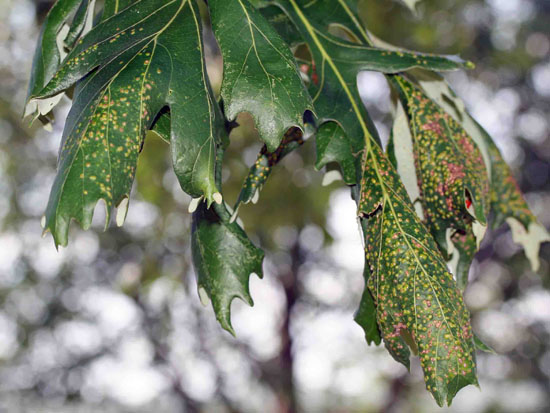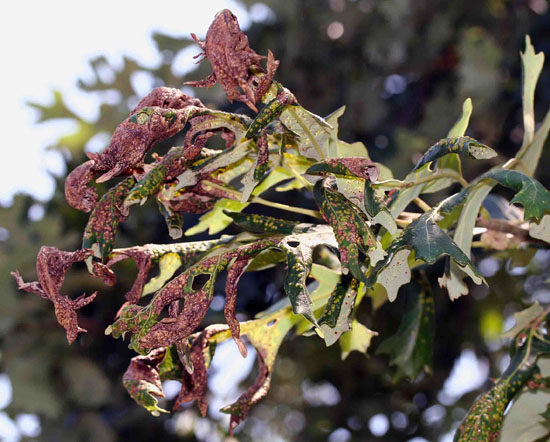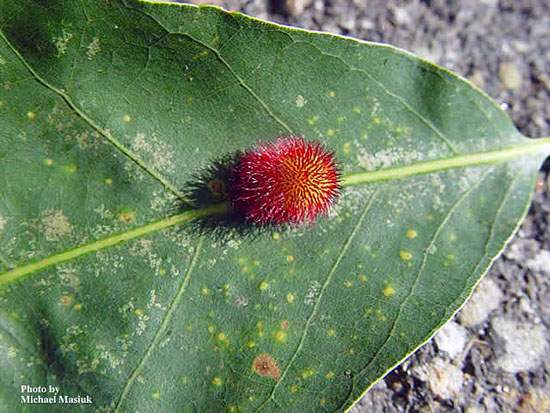Issue 10, June 25, 2012
Insect Galls
Insect and mite galls are numerous on trees throughout Illinois this year, as they are in most years. Oaks have the most galls, by far, with most of their galls being caused by tiny gall wasps in the Family Cynipidae. Galls are also caused by gall midges (flies), phylloxerans and psyllids (sucking bugs), and eriophyid mites.
Jumping oak gall infestations are more common this year than usual. These galls appear as green pimples on white and bur oak leaves. The galls turn brown later in the year. As the galls mature, they frequently break loose from the leaves and fall to the ground. On a patio or other hard surface, they quiver and jump slightly, hence their name. It is suspected that the gall wasp, Hymenoptera: Cynipidae, lays her eggs on dormant leaf buds, allowing them to appear very early on the leaves.

Jumping oak gall.

Leaves infested with jumping oak gall.
Hedgehog galls are common this year as they are in most years. There are several species that produce one-quarter inch to one-half inch diameter round, prickly galls on oak leaf midveins. The galls start off green, turning brown later in the summer.

Oak hedgehog gall.
Leaf galls rarely cause any serious harm to the tree as the unaffected tissue on even the same leaf continues to produce food for the plant. Some individual trees appear to be less susceptible to getting galls than others, with it being common for unattacked or lightly attacked trees to grow next to heavily attacked trees. Over the years, there is very little difference in growth in height and trunk diameter between these trees, indicating that leaf galls have little effect on tree heath. However, some stem and twig galls can hinder tree growth or kill heavily infested trees.
Horned oak galls and gouty oak galls continue to be numerous, particularly in southern Illinois. These are woody galls that are brown and coalesce into large galls up to golf ball size that girdle and kill twigs and small branches on pin, shingle, and other oaks. Horned oak galls have one-eighth inch horns protruding from the gall through which the adult gall wasps emerge. Gouty oak galls do not have horns, and the gall wasp adults emerge through holes that they chew through the gall surface.

Horned oak galls on pin oak.
Horned and gouty oak galls can become numerous enough to weigh down and break branches. Their girdling can debilitate trees to the point of killing them. Their numbers seem to be somewhat less in the last year or two compared to previous years. We may be starting to see the ending of the current infestation.
Most galls are caused by native insects and mites. As such, they are attacked by parasitic wasps and other natural enemies that tend to keep them under control. Infestations typically follow the course of other native insects and mites, being common for about three years followed by low numbers for about eight years, creating an eleven year cycle of boom and bust. (Phil Nixon)
Author:
Phil Nixon